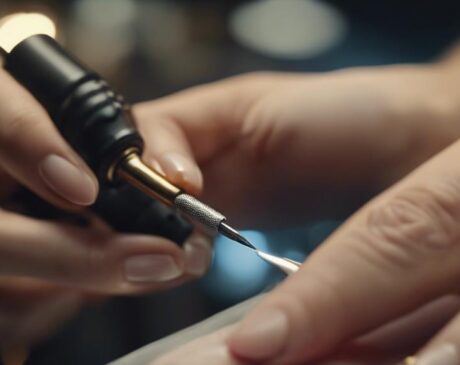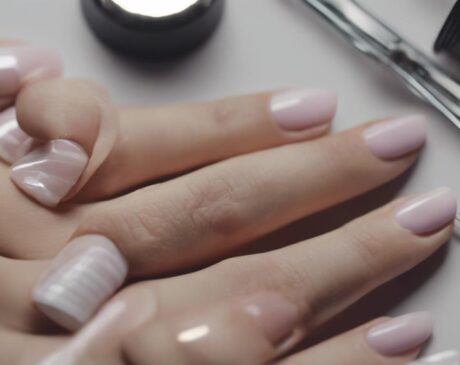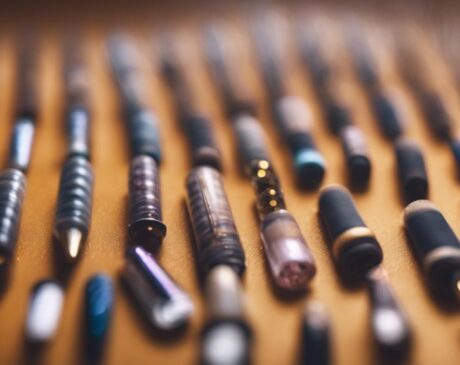Can You Use a Nail Drill on Natural Nails?
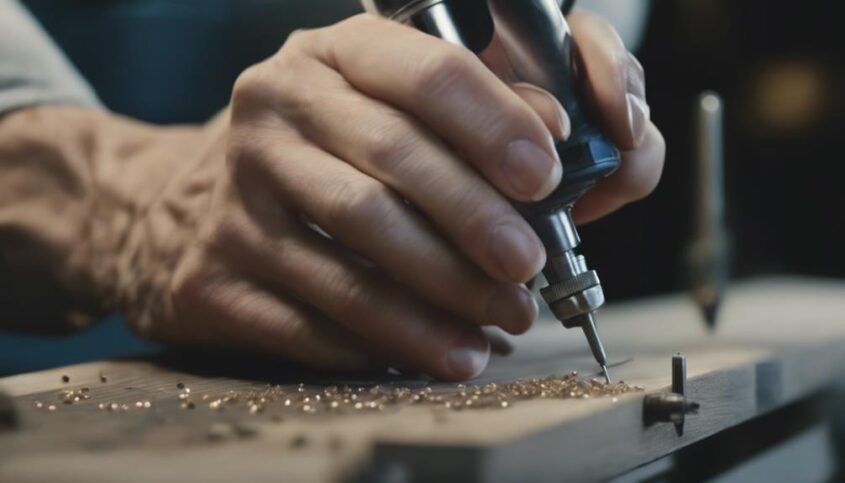
Using a nail drill on natural nails can efficiently shape, smooth, and remove old polish or gel, but caution is essential. Benefits include time-saving nail care and precise grooming. Risks include nail damage, discomfort, and infection. To safely use a nail drill, start slow, avoid pressure, sanitize the drill bit, and prioritize nail health. Consider professional training for advanced techniques. Alternatives like emery boards and cuticle pushers offer gentler options. Proper knowledge and techniques are key to mastering nail drill use. Discover more about nail drill basics, risks, and safety measures for optimum nail care.
Key Takeaways
- Yes, a nail drill can be used on natural nails with proper technique.
- Start with low speed and gentle pressure to avoid damage.
- Keep the drill moving constantly to prevent over-filing.
- Use clean, sanitized drill bits to reduce infection risks.
- Stop immediately if any discomfort or pain is felt during the process.
Understanding Nail Drill Basics
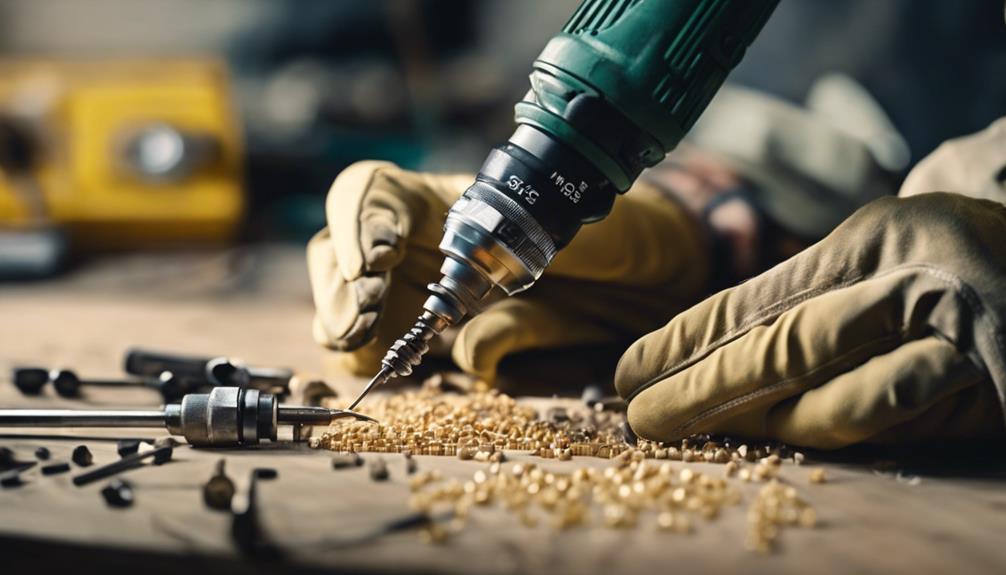
What are the essential basics to understand when using a nail drill on natural nails? When delving into the world of nail drills, especially when working on natural nails, it is crucial to grasp the fundamental principles to ensure a safe and efficient experience. Firstly, selecting the appropriate drill bit is key. Different bits serve different purposes, such as shaping, filing, or removing cuticles, so understanding their functions is vital. Next, controlling the speed of the drill is essential. Lower speeds are typically safer for natural nails to prevent damage or overheating. Furthermore, maintaining a light touch and using gentle pressure while operating the nail drill helps to avoid unnecessary friction and heat generation. It is also important to keep the drill moving constantly to prevent heat buildup in one spot. Lastly, always ensure that the natural nails are clean and dry before beginning any drilling process to prevent infections or damage. Mastering these basics will contribute to a successful nail drilling experience on natural nails.
Benefits of Using a Nail Drill
Using a nail drill on natural nails offers precise shaping capabilities, enabling intricate designs and personalized nail styles. The drill's high-speed rotation allows for quicker nail shaping compared to traditional methods, saving time during manicures. Additionally, the nail drill smooths out the nail surface, creating a sleek canvas for flawless polish application.
Nail Drill Precision
Utilizing a nail drill enhances precision in nail shaping and cuticle maintenance, leading to a professional and polished finish. Nail drills allow for intricate detailing and shaping with accuracy that is challenging to achieve manually. The precision offered by nail drills enables technicians to create custom nail designs, smooth out rough edges, and maintain cuticles with finesse. This level of precision is particularly beneficial for those seeking perfection in their nail care routine. By using a nail drill, individuals can ensure that each nail is shaped and maintained to the desired specifications, resulting in a flawless and professional look. The precision provided by nail drills elevates the overall quality of nail care services, appealing to clients who appreciate meticulous attention to detail.
Faster Nail Shaping
When employing a nail drill, one can significantly expedite the process of nail shaping, resulting in efficient and precise outcomes. Nail drills offer a swift and effective way to sculpt and refine the shape of natural nails, allowing for a quicker transformation compared to traditional manual methods. The high-speed rotation of the drill bit enables nail technicians to work swiftly while maintaining control and accuracy. This accelerated process is particularly beneficial for busy individuals seeking a time-saving solution without compromising on the quality of the nail shape. By harnessing the power of a nail drill, individuals can achieve their desired nail shape in a fraction of the time it would take using conventional tools, making it a valuable asset for those who prioritize speed and precision in their nail care routine.
Smoother Nail Surface
With the efficient nail shaping process facilitated by a nail drill, individuals also benefit from a smoother nail surface that enhances the overall appearance and feel of their natural nails. The precision and speed of a nail drill ensure that the nail surface is perfectly even and free from any rough edges or inconsistencies. This smooth finish not only looks aesthetically pleasing but also provides a flawless canvas for nail polish application, allowing colors to appear more vibrant and last longer. Additionally, a smoother nail surface reduces the likelihood of snagging or chipping, promoting healthier nails overall. By utilizing a nail drill, individuals can enjoy the innovative advantage of achieving impeccably smooth natural nails effortlessly.
Risks of Using a Nail Drill
Using a nail drill on natural nails can pose potential risks to the health and integrity of the nails. While nail drills can be efficient tools for shaping and smoothing nails, improper use can lead to adverse effects. It is essential to be aware of the risks involved to maintain nail health and prevent damage. Here are four potential risks of using a nail drill:
- Nail Damage: Excessive drilling or incorrect technique can weaken the nail structure, leading to splitting, peeling, or breakage.
- Infection: If the nail drill is not properly sanitized between uses, it can introduce bacteria and fungi, increasing the risk of infection.
- Heat Build-up: Friction from the drill can generate heat, causing discomfort or even burning the nail bed if not used carefully.
- Thinning of Nails: Overuse of a nail drill can result in the thinning of the nail plate, making nails more prone to damage and sensitivity.
How to Safely Use a Nail Drill

To ensure the safe and effective use of a nail drill on natural nails, proper technique and precautions must be followed diligently. Begin by selecting the appropriate drill bit for the task at hand. Use a low to medium speed setting on the drill to prevent damage to the nail plate. Hold the drill perpendicular to the nail surface to avoid causing accidental injuries. Keep the drill moving constantly to prevent heat build-up that could lead to discomfort or damage. It's essential to never apply excessive pressure when using the nail drill, as this can result in thinning of the nails or even cause pain. Regularly sanitize the drill bits and equipment to maintain a hygienic environment and prevent the spread of infections. Remember, practice makes perfect, so take your time to develop your skills and confidence when using a nail drill on natural nails.
Alternatives to Nail Drills
When looking for alternatives to nail drills for nail care, various manual tools and techniques can provide effective solutions without the need for mechanical devices. These alternatives offer a more hands-on approach to nail maintenance and can be gentler on natural nails. Here are four innovative alternatives to nail drills:
- Nail Files: Emery boards and glass nail files are excellent manual tools for shaping and smoothing the nails without the need for a drill.
- Buffer Blocks: Buffer blocks can help to gently smooth out ridges on the nails and create a polished look without the use of a drill.
- Cuticle Pushers: Cuticle pushers are essential for pushing back the cuticles and maintaining healthy nail beds, promoting nail health without the need for drilling.
- Nail Scissors or Clippers: Precise nail scissors or clippers can trim the nails to the desired length and shape without the potential risks associated with nail drills.
Final Tips for Nail Drill Use
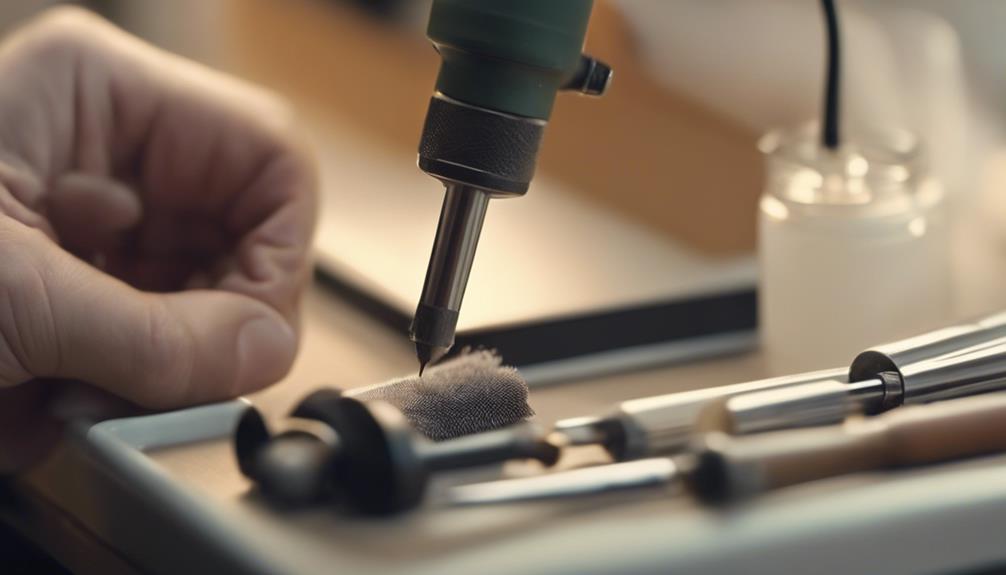
Implementing proper safety measures and techniques when utilizing a nail drill is crucial for maintaining the health and integrity of natural nails. To ensure a safe and effective nail drilling experience, consider the following final tips:
- Choose the Right Bits: Selecting the appropriate drill bits for the task at hand is essential. Use finer bits for shaping and smoothing, while coarser bits are suitable for removing product buildup.
- Control Speed and Pressure: Avoid applying excessive pressure or using high speeds on the nail surface. Gentle pressure and controlled speeds help prevent damage to the natural nail.
- Regular Maintenance: Keep your nail drill clean and well-maintained to ensure optimal performance. Regularly disinfecting the drill bits and machine helps prevent the spread of bacteria.
- Professional Training: If you are new to using a nail drill, consider seeking professional training to learn proper techniques and safety measures.
Frequently Asked Questions
Can a Nail Drill Be Used to Remove Gel or Acrylic Nails?
A nail drill can effectively remove gel or acrylic nails when used correctly by a skilled technician. It offers precision and efficiency in the removal process, providing a professional solution for those seeking to maintain healthy natural nails.
Are There Different Types of Nail Drills for Different Purposes?
In the realm of nail care, various nail drills cater to specific purposes like shaping, filing, and buffing. These specialized tools offer precision and efficiency, enhancing the overall nail grooming experience with tailored solutions for different techniques and desired outcomes.
Can a Nail Drill Be Used on Toenails?
Yes, a nail drill can be used on toenails to effectively shape, buff, and smooth the nails. It is essential to use the appropriate speed and attachments designed for toenails to ensure safe and precise results.
How Often Should a Nail Drill Be Cleaned and Maintained?
Regular cleaning and maintenance of a nail drill are crucial for optimal performance. It is recommended to clean after each use to prevent buildup of debris and ensure longevity. Proper maintenance enhances precision and efficiency.
Are There Any Specific Precautions to Take When Using a Nail Drill on Natural Nails?
When using a nail drill on natural nails, it is crucial to take specific precautions to avoid damage. Proper training, using the correct drill bits, controlling speed, and ensuring gentle handling are essential for safe and effective nail care.

